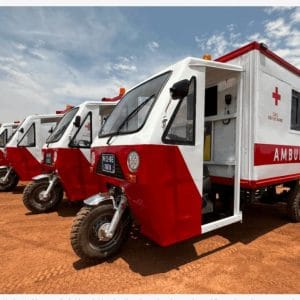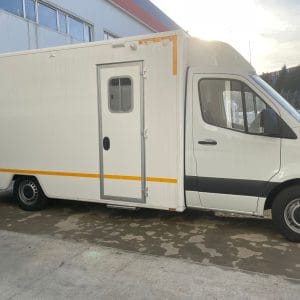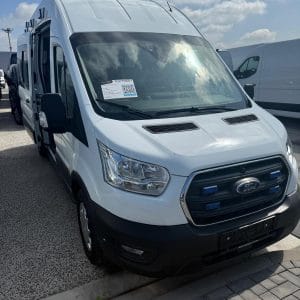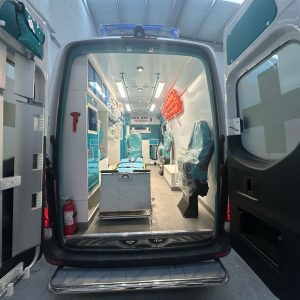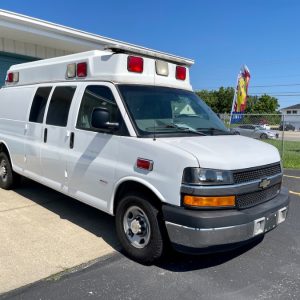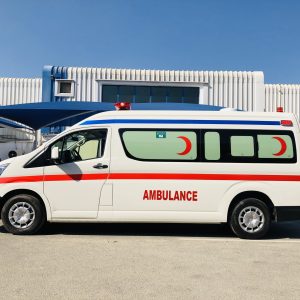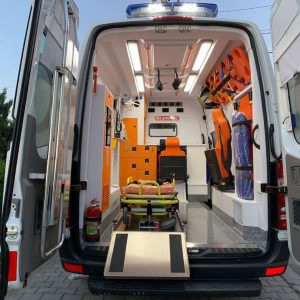1. Introduction to Mobile Communications in Office Vehicles
The number of cars with permanently installed communications equipment has been continually increasing in recent years. These vehicles are being equipped with more and more new functions and features. Vehicles, which will be on sale in two years, will contain office vehicles, home vehicles, entertainment vehicles, and navigation or supervisory vehicles. Vehicles themselves are becoming mobile offices with which salespeople or real estate agents can get in contact with their business partners and customers. This vehicle uses mobile stationary in the first four modes but switches to mobile operations in the fifth mode.
Vehicles can communicate with salespeople or home such as navigational or supervisor. The importance of mobile communications for office vehicles will now be discussed, which are used during business travel. The communication possibilities in these vehicles will be described afterwards. Finally, some of the conditions that an application must satisfy will be described. Office vehicles are used for business travel, having as a purpose to update information and to be updated, the way of travel between important waypoints on the road graph is fixed or to explore the ways till these waypoints of interest.
2. Benefits of Mobile Communications in Office Vehicles
Companies can see the release of many benefits of integrating mobile communications into office vehicles, including increased efficiency, safety, and driver productivity, as well as the reduction of erroneous deliveries and dispatch disputes. In essence, mobile communications allows reduced communication time, better management of delivery routes, and the ability to check the status of orders and availability of vehicles instantly, which can result in more deliveries per vehicle per day and, consequently, a boost in company profits.
Additionally, research indicates that in-vehicle productivity and overall employee performance are increased when drivers are connected to the office through mobile communications. A major advantage of integrating mobile communications into office vehicles is that it assists companies in ensuring that their vehicle fleet is operating as efficiently as possible. A survey of senior virtual-local-area-network (VLAN) control professionals found that the majority of respondents believed that security in terms of data, vehicles, and drivers would be improved by integrating mobile communications. Essentially, mobile communications can provide up-to-the-minute information on vehicle and driver whereabouts, destination, and speed of travel, which could be seen as an advantage for the employer in terms of monitoring staff, even though some employees may view these aspects of communications negatively.
Besides offering real-time reports on order status to the customers and control room, in-vehicle mobile communications can also provide the ability to check the availability and location of delivery vehicles in real-time. Through vehicle-tracking technologies, dispatch staff can monitor the journey progress and route details of office vehicles. Data obtained from this process can help the control room determine the availability, location, and expected time of delivery. Additionally, vehicle-tracking technologies have been shown to reduce disputes in instances when a customer inquires about when and where a delivery truck will arrive, thus providing a satisfaction guarantee.
3. Challenges and Solutions in Implementing Mobile Communications in Office Vehicles
Mobile communications are essential in mobile offices, as they enable vehicles to connect to the internet for exchanging data in real time with their office servers and other vehicles. Already since the 1970s, captains of aircraft have communicated by radio to request landing and take-off permissions and to obtain weather forecasts, warnings, and information about the flight. Mobile Internet connectivity issues temporarily delayed the development of a mobile office, but the technology is still available and only suffering a little slowing down in take-up.
One of the key challenges for managing office vehicles is their integration into the mobile communications infrastructure. There are two main obstacles: • Cost of GPS receivers, satellite communication modules, and mobile communications equipment. Some basic systems, such as radio and telephone, are standard equipment in any road vehicle. • Technical complexity of GPS, satellite communications, cell phone communications, mobile handheld radio, vehicle thick client, and vehicle thin clients (sensors, DoIP, and FIP). The first problem is unlikely to be solved in the near future, but, for the first time, high-quality global research can address the obvious options for overcoming this challenge, determining the feasibility of a more integrated vehicle computer architecture with the construction of an “Internet Protocol-over-DoIP-in-FIP-via-hub-distributed-CAN” prototype, and ascertaining the technical capabilities of autonomous and urban land vehicles to replace most office vehicle demand.
4. Best Practices for Utilizing Mobile Communications in Office Vehicles
1. Use the latest assistive technologies: Allocate resources for developing the most relevant and emerging technologies, including wearable devices and platforms that can help with access. It might also be useful to research new assistive smart technologies such as screen magnifiers built into eyeglasses, intelligent voice control systems for cars, and apps for wayfinding. And since printed materials continue to be helpful to the general population, incorporate inclusive practices when making print resources that are also available in braille, large print, or by request on a phone app. Also, when purchasing assistive technology for office vehicles, be sure to try it out for usability features (including interface and system controls, available help features, and compatibility with other devices).
2. Develop policies and protocols for health and safety standards: In addition to explaining how to use assistive technologies, provide clear guidance regarding preferred communication methods. For example, use real-time communication methods such as video or chat to check in with employees on the road, rather than traditional options like text messages or phone calls. Craft a policy about the dangers of using smartphones or driving without some type of voice interface. It might also be useful to create a subject matter expert on travel informatics work including the use of office vehicles, location-based services, communication with the mobility-impaired staff, and developing or purchasing new technology to facilitate communication. Offer training to all travel specialists to help with this capability.
5. Case Studies: Successful Implementation of Mobile Communications in Office Vehicles
Throughout Europe, some 15,000 vehicles have been equipped with mobile data systems. These include vehicles in services for the old, home help services, garbage pick-up, and cleaning services. In this section, a few case studies are presented, and the systems in the vehicles employed are shed light upon. The organizations that have equipped their vehicles with mobile data systems are: Antwoord van de Dag/Answer of the Day (Nijmegen, The Netherlands), Danish Mail (Copenhagen, Denmark), NBM Amstelland Luchthavenvervoer (Schipol, The Netherlands), Omonia (Heraklion, Greece), Philishave Services (Drachten, The Netherlands), Stinex Nederland (Utrecht, The Netherlands), SOS Alarm (Stockholm, Sweden), and the Municipal roads maintenance department Doetinchem (The Netherlands). The reason for the implementation of a mobile data system and the way how mobile communications have been embedded in the organization differs per case study.
NBM Amstelland Luchthavenvervoer BV, the Netherlands: As of the beginning of 1986, an internal project group within Noordshuttle-NBM was established to improve communication between the organization and drivers on the basis of a very rapid development in the field of mobile communications. The research group consisted of two drivers, the dispatching manager, an official of the planning department, and a member of the purchasing department. For a year long, they have been investigating the possibilities for the development and placing of a mobile data system within the NBM organization, which specializes in airport transportation. The task was data communication. After four months, a test showed that modem equipment was not subject to the negative effects of a car. A CB-radio was also looked into, but the costs to set this up and maintain it were too high. In November, the first appliance was set up in a car for a visual test. In December, the concept was tested on the basis of a simple application: the exchange of data with the administration for all invoices of a specific day. A second appliance was built. During January, preparations were made to ensure a qualitative and affordable improvement in the quality of service. Subsequently, the first vehicles equipped with mobile data systems hit the road in February 1987, and since that date, an increasing number of vehicles have been equipped with this system. The system as it stands today is applicable for multiple purposes. The system can place the drivers at the wheel more in the service speed, and unlike other systems, the driver can continue to drive while the data is entered. It’s a thirty-minute drive from Schiphol to the next station of destination, v.v. All databases in a special program are quite possible. Control departments: From now on, BM-flight has control in real-time of how often passengers miss pick-up services. Also, the waiting times have now been accurately registered. Besides this, there’s the possibility that the control department gets a message if an EXTRA VEHICLE IS NEEDED and the exact number of passengers booked on the new vehicle. Billing: The data is registered digitally by the onboard computer system. From Schiphol, the bill message is sent to dras with a pre-set ALIAS. The driver puts a 3-digit code in front of the contract number. Dras can receive the messages during the whole day in the case that a vehicle returns after the office day of Evers.



